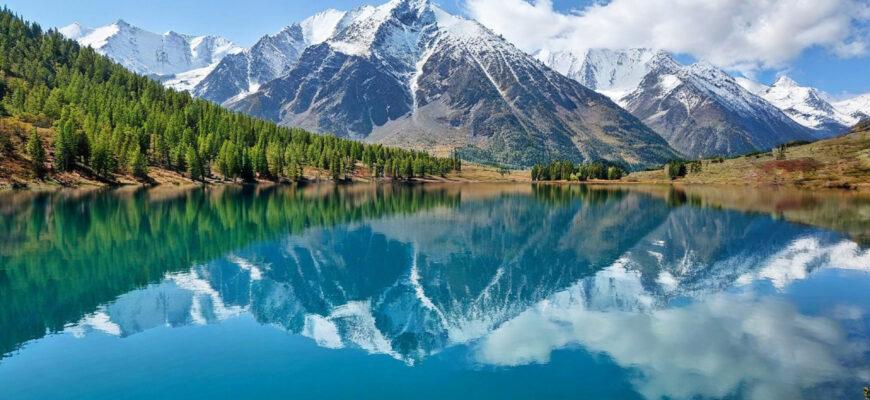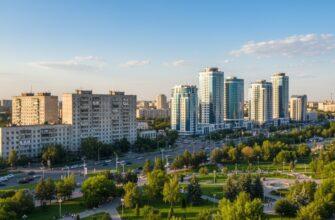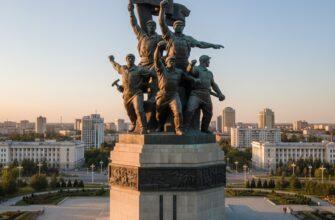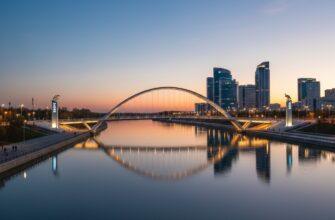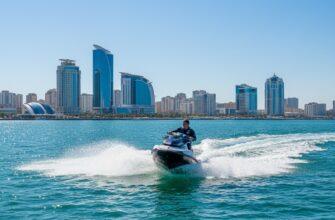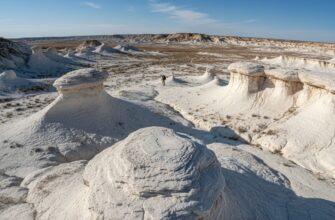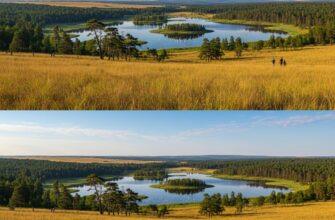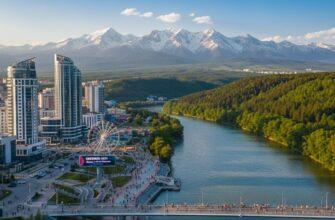East Kazakhstan Province: The Ultimate Travel Guide
East Kazakhstan Province offers travelers a remarkable blend of pristine wilderness, diverse landscapes, and rich cultural heritage. Often called the “Kazakh Switzerland,” this region combines breathtaking mountain scenery, crystal-clear lakes, unique geological formations, and authentic cultural experiences that remain largely undiscovered by mass tourism. This comprehensive guide covers everything you need to know for an unforgettable journey through one of Kazakhstan’s most spectacular regions.
Introduction to East Kazakhstan Province
East Kazakhstan is a land of extraordinary contrasts where the steppe and semi-desert zones of Asia meet the mountainous taiga of Siberia, creating a unique landscape spectrum encompassing deserts, steppes, forests, and mountains adorned with eternal glaciers. The region’s distinctive geological character, pristine nature, and remarkable biodiversity make it one of the most colorful parts of not just Kazakhstan, but all of Central Asia.
This geographically isolated region, formerly part of Imperial Russia, features rocky semi-deserts, vast parkland-steppes, and rugged mountain terrains. Its natural beauty is complemented by a rich cultural heritage, with numerous prehistoric archaeological sites and historical monuments documenting Kazakhstan’s multi-ethnic background and the ancient Silk Road that once traversed these lands.
Best Time to Visit East Kazakhstan
The climate in East Kazakhstan is predominantly continental, characterized by cold winters and warm summers. The optimal time to visit is from June to September when the weather is mild and most outdoor activities are accessible. During this period, you can fully explore the region’s natural wonders without the limitations imposed by harsh winter conditions.
Some travelers report that June can be rainy in the Almaty area, while September is considered by locals to be the best season in Kazakhstan. July tends to have higher temperatures that might not be ideal for extensive sightseeing, so plan accordingly if you’re sensitive to heat.
Natural Wonders of East Kazakhstan
Altai Mountains and National Parks
The Altai Mountains form the crown jewel of East Kazakhstan’s natural landscape. This mountain range features:
- Katon-Karagay National Park: Home to numerous waterfalls and beautiful lakes with spectacular views, making it an ideal destination for those seeking a digital detox in nature.
- Belukha Mountain: Covered with eternal glaciers, this sacred mountain is the highest summit of the Altai range, attracting thousands of climbers annually.
- West Altai Nature Reserve: Near the city of Ridder, this protected area showcases the region’s rich biodiversity with sub-alpine meadows full of flowers and herbs, including golden root, maral root, and thick-leaved bergenia.
- Kalbinsky Ridge: This 400-kilometer low mountain system features diverse ecosystems with mountain-steppe landscapes on the lower slopes and mountain forests of pine and pine-birch trees on the upper parts, culminating in steppe subalpine meadows at the peaks.
Lakes and Water Features
East Kazakhstan boasts numerous pristine lakes that captivate visitors with their beauty:
- Lake Markakol: The pearl of the Markakol National Preserve, this lake sits in a hollow confined by the Kuchum range (over 3,000m) and the Azutau range (2,385m). Stretching 38km in length and 19km in width, it’s 27m deep and home to the unique uskuch fish of the salmon family – the only place in Kazakhstan where this species can be found.
- Sibinskie Lakes: Located about two hours from Ust-Kamenogorsk, this system of five lakes features pure, clear water surrounded by picturesque granite mountains, with a total area of 31 square kilometers.
- Lake Kaindy: Famous for its submerged forest, this striking lake was created after an earthquake and subsequent landslide created a natural dam.
- Lake Kolsai: Often called the “Pearls of Northern Tien-Shan,” these mountain lakes offer spectacular scenery and hiking opportunities.
- Lake Alakol: Known for its black beaches and healing waters, this lake is also an attractive destination for birdwatching during seasonal bird migrations.
Canyons and Unique Landscapes
East Kazakhstan features several dramatic geological formations:
- Charyn Canyon: Often compared to the Grand Canyon, visitors can take either a short 1.5km top view walk or a more adventurous 6km round trip through the Valley of Castles for a closer look. The canyon culminates in a river where travelers can rest under the trees.
- Kiin-Kerish Valley: Also called the “City of Spirits,” this alien landscape resembles red flames emerging from the earth, creating one of the most unusual vistas in the province.
- Zaisan Hollow: This huge deserted basin contains the ancient Zaisan Lake, abundant in freshwater fish. The hollow is protected from the hot winds of China’s Xinjiang Province by the Manrak and Saur mountain ranges.
Cultural and Historical Sites
East Kazakhstan’s cultural heritage reflects its rich history and diverse ethnic influences:
- East Kazakhstan Regional Architectural and Ethnographic Museum-Reserve: Located in Ust-Kamenogorsk, this complex comprises three historic buildings and the Left Bank Complex. The first building (1881) hosts exhibitions of “Altai Gems” and decorative arts; the second building showcases the ethnographic heritage of Kazakhs from Eastern Kazakhstan in the late 19th and early 20th centuries; and the third building presents “We Are the People of Kazakhstan,” celebrating the nation’s multinational unity.
- Ablaikit Monastery Temple: Built in 1654 by Abylai Khan, these ruins near the Sibinskie Lakes preserve magnificent Tibetan manuscripts despite the monastery’s destruction during battles with the Dzungars.
- Ak Baur Cave: This natural and historical cave near Sibinskie Lakes contains mysterious drawings believed by some to represent the night sky. The complex features a platform with markings of a sundial and an exact image of the Ursa Major constellation, suggesting ancient astronomical observations. Excavations have uncovered settlements from the Saka era of the early Iron Age and the Bronze Age.
- Semipalatinsk Nuclear Testing Site: For those interested in Soviet history, this site offers a sobering look at the dark side of the past. Visitors should take necessary precautions and hire a professional guide when visiting.
Major Cities and Transportation
Getting Around East Kazakhstan
The main cities in East Kazakhstan Province are:
- Ust-Kamenogorsk (Oskemen): Known as “the gates of the mountainous Altai” due to its strategic location at the intersection of transport routes.
- Semey: One of the largest cities in the province with significant historical importance.
Transportation options in East Kazakhstan include:
- Trains: Kazakhstan has a decent rail network linking major cities, though distances can be substantial. When taking overnight trains, it’s advisable to spend extra for a bed rather than a seat for long journeys.
- Car Rental: While car rental services are limited in Kazakhstan, they are available in major cities. Renting a vehicle provides flexibility for exploring remote areas, though some destinations may require 4WD vehicles. For example, small cars may not be permitted on roads to places like Altyn Emel National Park.
- Guided Tours: Many travelers opt for tour services with drivers to navigate the challenging terrain and overcome language barriers.
Accommodation Options
Accommodation in East Kazakhstan ranges from hotels in major cities to guesthouses in smaller towns and nature lodges near popular attractions. For budget travelers, hostels cost around €10 per night, while those seeking more comfort can find higher-end options in cities like Ust-Kamenogorsk.
When visiting remote natural sites like Charyn Canyon or Lake Kolsai, plan accommodations in advance as options may be limited.
Guided Tours and Services
Hiring a Guide
For travelers who don’t speak Russian or Kazakh, hiring a guide is highly recommended:
- Language Services: Guide services are available in Russian and English, with German and other languages possible upon request.
- Costs: English-speaking guides cost approximately 16,800 KZT per day in urban conditions and 18,200 KZT for active programs involving physical activities and overnight stays in the field.
- Expertise: Many guides have participated in developing tours and possess deep knowledge of attractions and how to access them. Some hold personal governmental licenses as tourism instructors.
- Specialized Guides: For certain tours, specialized guides are available, such as nuclear experts for the Semipalatinsk nuclear test site or professional archaeologists for historical sites.
Tour Options
Various tour options are available throughout East Kazakhstan:
- Nature Tours: Explore the region’s natural wonders with tours to Katon-Karagay National Park, Lake Markakol, and the Altai Mountains.
- Adventure Activities: Options include trekking, bike tours, and other outdoor pursuits led by experienced guides with both theoretical and practical training.
- Cultural Excursions: Visit historical sites, museums, and cultural attractions with knowledgeable guides who can provide context and deeper understanding.
Outdoor Activities
Hiking and Trekking
East Kazakhstan offers excellent hiking opportunities:
- Shymbulak: Take the cable car to the second level and hike to the Bogdanovich Glacier. This challenging but rewarding trek offers stunning views and the chance to witness magnificent glaciers. Be sure to check the cable car schedule to ensure you can return in time.
- Charyn Canyon: Beyond the standard 1.5km viewpoint walk, adventurous travelers can undertake a 6km round trip through the Valley of Castles for a more immersive canyon experience. Carry plenty of water, especially in hot conditions.
- Altai Mountain Trails: The region offers numerous hiking routes of varying difficulty, particularly around Katon-Karagay National Park and Ridder.
Other Adventures
Beyond hiking, East Kazakhstan offers diverse outdoor activities:
- Horseback Riding: Experience the traditional Kazakh way of traversing the landscape on guided horse treks.
- Mountaineering: Experienced climbers can attempt Belukha Mountain and other peaks in the Altai range.
- Birdwatching: Lake Alakol is particularly noted for its opportunities to observe migratory birds.
Practical Information
Language
Russian is widely spoken throughout East Kazakhstan, while Kazakh usage is increasing, particularly among ethnic Kazakhs. English is less common, especially outside major tourist areas, making translation apps or basic Russian phrases valuable for independent travelers.
Food and Cuisine
Traditional Kazakh cuisine offers hearty and flavorful dishes:
- Beshparmak: The national dish consisting of horse, beef, or lamb served on top of thinly pressed, wide-cut noodles.
- Kazy: A traditional horse sausage that is salty and slightly sour.
- Kuurdak: A dish of small chunks of meat cooked with potatoes and onions.
- Samsa: Meat or mashed potato-filled hand pies similar to pirogies, often sold from street stalls at affordable prices.
Safety Tips
- Weather Preparation: Bring appropriate clothing for changing mountain weather conditions, including rain gear and warm layers even in summer.
- Water and Supplies: Carry sufficient water and snacks when hiking, especially in remote areas or during hot weather.
- Guide Services: For visiting potentially hazardous sites like the Semipalatinsk Nuclear Testing Site, professional guides are essential.
- Communication: Download offline maps and translation apps as cell service may be limited in remote areas.
Recommended Itineraries
Short Visit (3-5 Days)
Day 1-2: Ust-Kamenogorsk
- Explore the East Kazakhstan Regional Architectural and Ethnographic Museum-Reserve
- Visit local markets and experience urban Kazakh culture
- Take a day trip to Sibinskie Lakes and Ak Baur Cave
Day 3-5: Altai Explorations
- Journey to Katon-Karagay National Park for hiking and nature photography
- Visit Lake Markakol to witness unique ecosystems and possibly spot wildlife
- Explore local villages to experience traditional Kazakh culture
Extended Exploration (7-10 Days)
Day 1-2: Ust-Kamenogorsk
- Same as short itinerary
Day 3-5: Southern Altai
- Explore Kiin-Kerish Valley and its unusual red rock formations
- Visit the shores of Lake Zaisan
- Hike in the foothills of the Saur range to see Permian slate fossils
Day 6-10: Northern Altai and Markakol
- Spend 2-3 days in Katon-Karagay National Park, hiking various trails
- Visit Lake Markakol and surrounding forests, home to diverse wildlife including brown bear, elk, lynx, and maral (Siberian deer)
- If time permits, venture to Ridder and the West Altai Nature Reserve
Conclusion
East Kazakhstan Province represents one of Central Asia’s most spectacular yet undiscovered travel destinations. With its dramatic blend of mountains, lakes, forests, and canyons, coupled with a rich cultural heritage, the region offers adventurous travelers an authentic experience far from the beaten tourist path.
While tourism infrastructure continues to develop, the pristine nature and genuine hospitality of East Kazakhstan make it particularly appealing for those seeking to connect with unspoiled landscapes and traditional culture. Whether you’re an avid hiker, a nature photographer, a history enthusiast, or simply a curious explorer, East Kazakhstan rewards visitors with unforgettable experiences and breathtaking vistas at every turn.
By planning thoughtfully, engaging knowledgeable guides, and approaching the region with an adventurous spirit, you’ll discover the remarkable treasures of Kazakhstan’s eastern frontier—a land that truly deserves its nickname as the “Kazakh Switzerland” for its natural splendor and serene beauty.

